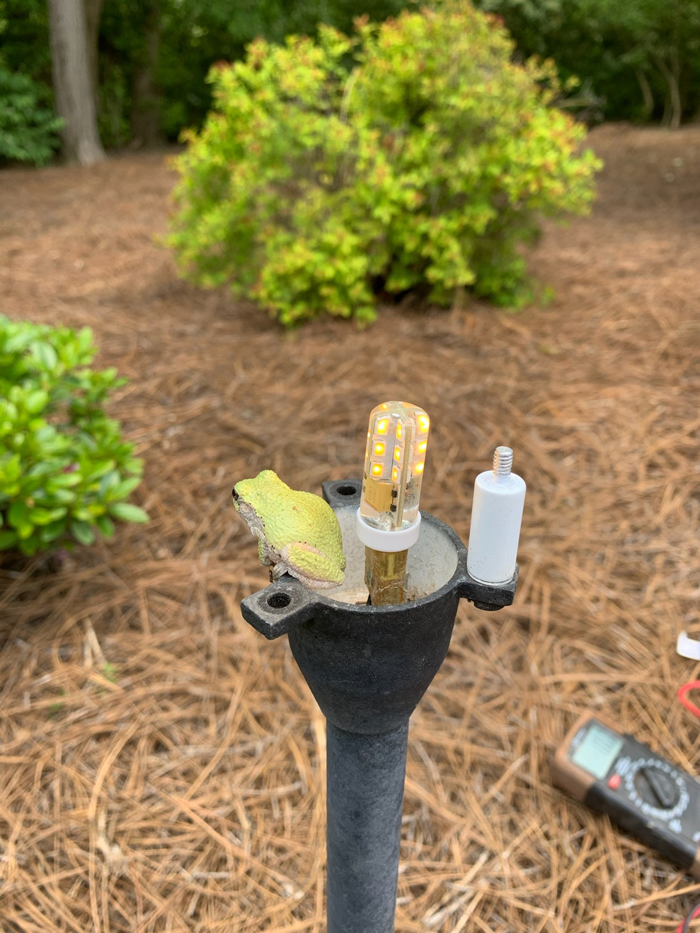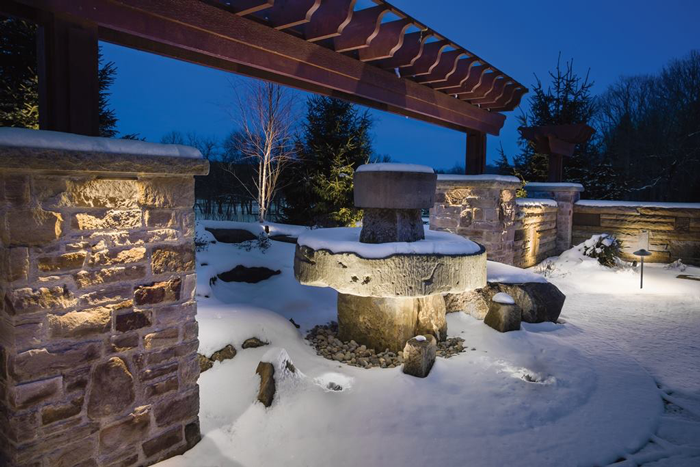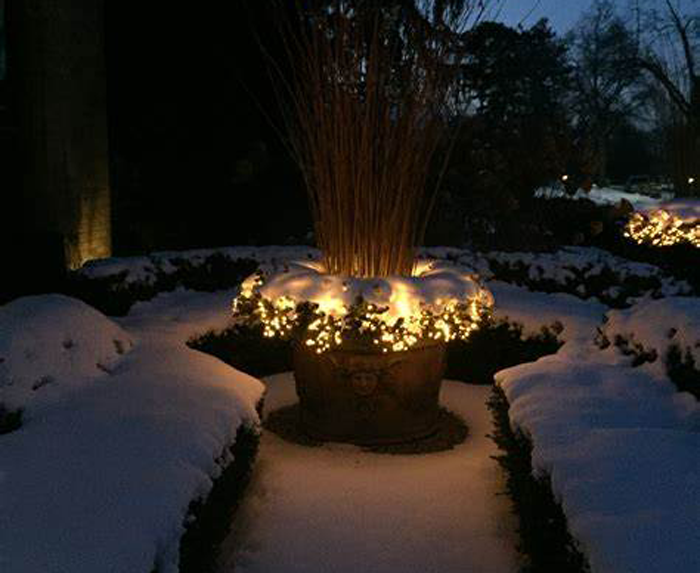Energy-Efficient Lighting is Cool (Literally)
LED landscape lighting is energy efficient. In part, this means that the bulbs don’t use heat to create light. By design, an incandescent bulb wastes a lot of energy through heat:
“Incandescent light bulbs create light by heating a filament inside the bulb; the heat makes the filament white-hot, producing the light that you see. Halogen light bulbs create light through the same method. Because incandescent and halogen bulbs create light through heat, about 90% of the energy used is wasted to generate heat.”
If you’ve ever burned your finger on an incandescent bulb, you’ll know that this lighting source definitely is hot enough to melt snow.
Does LED Landscape Lighting Melt Snow?
We sometimes get the question from customers, “So, will my LED landscape lights melt snow? Or will the lights be hidden and useless after a snowstorm?”
Fortunately, LED landscape lighting does produce just enough heat to melt snow away from the fixture and keep your landscape lighting effects in good working order. It make take an hour or two for the snow to melt, compared to almost instantaneously with incandescent bulbs.
Landscape lighting after a snowstorm also take on a glowing, ethereal effect. The light filters through the snow build-up around the fixture and looks (shall we say?) enchanting.
Low Heat Makes LED Landscape Lighting Safer Year-Round
Wildlife finds its way into the most curious places. Take a look at this frog we found inside a customer’s path light last summer. Even though the light is “burning” brightly, the frog is unharmed. In an incandescent lighting fixture, the frog would look much… crispier.


The low heat emission from LED landscape lighting makes it a safer choice for wildlife, children and all creatures whose playfulness can sometimes overshadow good sense.
Want to see how LED landscape lighting can transform your property? Contact us for a lighting portrait quote.



Leave A Comment